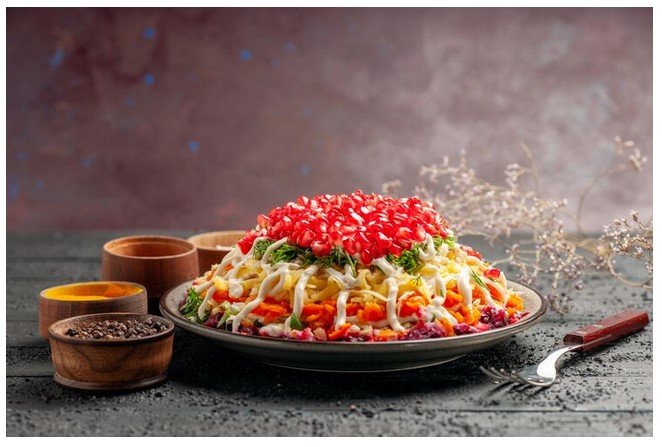Introduction to Çievri
Have you ever heard of Çievri? This delightful delicacy, originating from the heart of Turkish cuisine, is more than just a dish; it’s a cultural treasure. As food trends evolve and the world becomes increasingly curious about global flavors, Çievri stands out with its rich history and unique preparation methods. Whether you’re an adventurous foodie or simply looking to explore new culinary experiences, understanding Çievri can open up a whole new perspective on traditional cooking.
Let’s dive into what makes this dish so unique!
History and Origin of Çievri
Çievri has deep roots in the culinary traditions of Eastern Turkey. Its history stretches back centuries, intertwined with the nomadic lifestyle of local tribes who relied on hearty and practical foods.
Originating from regions like Tunceli and Elazığ, Çievri was traditionally made to preserve meat during long journeys. The use of spices reflects the area’s rich cultural tapestry, blending flavors passed down through generations.
As communities settled and agricultural practices evolved, so did Çievri’s production methods. This dish became a staple not only for its taste but also for its nutritional value. Families would gather around to share stories while enjoying this flavorful meal, cementing its importance in social gatherings.
Today, it remains a symbol of heritage and resilience, representing both Turkey’s past and present culinary landscape.
Cultural Significance of Çievri
Çievri holds a special place in the hearts of many communities. This traditional dish is more than just food; it represents heritage and identity.
Passed down through generations, its preparation often involves family gatherings. These moments create bonds as recipes are shared, stories are told, and memories are made.
During celebrations or festivals, Çievri becomes a centerpiece. It symbolizes hospitality and generosity when served to guests. Sharing this dish fosters connections among friends and families alike.
Regional variations reflect local customs and ingredients, showcasing Turkey’s rich tapestry of cultural diversity. Each version carries its unique flavor profile while honoring tradition.
In essence, Çievri is woven into the very fabric of social life—celebrating milestones or comforting those in need during challenging times brings communities together around this beloved dish.
The Making of Çievri
Çievri is a culinary gem crafted with care and tradition. The process begins with selecting high-quality grains, typically wheat or corn. These grains are ground into fine flour, which forms the foundation of this unique dish.
Water and salt are added to create a dough that’s not too sticky, ensuring easy handling. The dough is then rolled out into thin circles, each delicate yet sturdy enough to hold its fillings.
Traditionally, Çievri is filled with various ingredients like spiced meat or seasonal vegetables before being folded over and crimped at the edges, resembling small pastries. Once formed, they can be cooked differently—baked until golden brown or pan-fried for an irresistible crunch.
This meticulous preparation highlights the artistry of making Çievri while honoring generations of culinary heritage passed down through families. Each bite tells a story steeped in culture and passion for food craftsmanship.
Traditional and Modern Applications of Çievri
Çievri is a versatile food that bridges both traditional and contemporary culinary practices. Traditionally, it has been enjoyed as part of regional dishes, often served with yogurt or vegetable stews. Its earthy flavor complements rich meals beautifully.
In modern kitchens, chefs are experimenting with Çievri in innovative ways. It finds its place in gourmet recipes, including salads and fusion dishes. Chefs appreciate its texture and nutritional profile, making it an appealing choice for health-conscious diners.
Food enthusiasts also use Çievri in baking gluten-free treats like cakes and cookies. The adaptability of this ingredient breathes new life into classic recipes while catering to diverse dietary needs.
Whether used or creatively, Çievri continues to inspire cooks across generations. It’s a testament to the enduring nature of traditional foods amidst evolving tastes and trends.
Health Benefits of Consuming Çievri
Çievri is more than just a delightful dish; it offers several health benefits that are hard to ignore. Rich in whole grains, it provides essential nutrients like fiber, vitamins, and minerals. These elements contribute to better digestion and improved gut health.
Additionally, the blend of ingredients often found in Çievri can help boost energy levels. Its complex carbohydrates release energy gradually, keeping you sustained throughout the day.
The inclusion of herbs and spices enhances flavor and adds antioxidants. These compounds play a crucial role in reducing inflammation and fighting oxidative stress.
Moreover, consuming Çievri may support heart health due to its healthy fats when prepared traditionally. This balance contributes positively to cholesterol levels.
Incorporating this traditional dish into your diet can enhance your overall well-being while satisfying your taste buds.
Where to Find and Try Authentic Çievri
For those eager to taste authentic Çievri, the journey begins in Turkey’s bustling markets and quaint village eateries. These local spots often hold the secret recipes passed down through generations.
In larger cities like Istanbul or Ankara, specialized restaurants focus on traditional dishes. Seek out places that emphasize regional cuisine for the most genuine experience.
Don’t overlook small towns known for their unique takes on Çievri. Local festivals are also a fantastic opportunity to sample this dish prepared by skilled hands.
Online platforms have made it easier than ever to discover hidden gems offering takeout or delivery options. Look for reviews highlighting authenticity and flavor.
Whether dining in or grabbing a bite on the go, embracing these diverse locations will bring you closer to enjoying Çievri at its finest.
Future Outlook for Çievri
As culinary trends evolve, Çievri is poised for a renaissance. Its unique taste and versatility make it an attractive option for chefs and food enthusiasts. Restaurants worldwide are beginning to incorporate this traditional dish into diverse menus.
The rise of health-conscious eating may further elevate Çievri’s status. With its rich nutritional profile, it appeals to those seeking wholesome alternatives. Vegan and gluten-free versions could capture even wider audiences looking for sustainable dining options.
Social media plays a crucial role in shaping food preferences today. Instagrammable presentations of Çievri can create buzz, drawing attention from younger generations eager to explore global cuisines.
Culinary festivals dedicated to regional specialties might also spotlight Çievri, promoting cultural appreciation while encouraging innovation within traditional recipes. This exposure fosters new ways to enjoy an age-old favorite while keeping its essence intact.
Conclusion
Çievri stands as a testament to cultural heritage and culinary innovation. Its rich history, going back centuries, reflects the agricultural practices of regions where it originated. This unique ingredient has woven itself into the fabric of traditional dishes while finding its place in modern cuisine.
The method of making Çievri is fascinating; showcasing craftsmanship passed down through generations. As people become more health conscious, the benefits of consuming Çievri are increasingly recognized. Rich in nutrients and offering versatility in cooking, it’s clear that this ancient food holds relevance today.
For anyone eager to explore authentic flavors, seeking out local markets or specialty stores can lead you to genuine Čievri products. With an increasing interest worldwide, we can anticipate a bright future for this remarkable staple as it continues to evolve alongside contemporary culinary trends.
Embracing Çievri means appreciating its taste and its journey through time—a journey worth savoring. Whether you’re enjoying it in a traditional dish or experimenting with new recipes, there’s much joy to be found in every bite.




